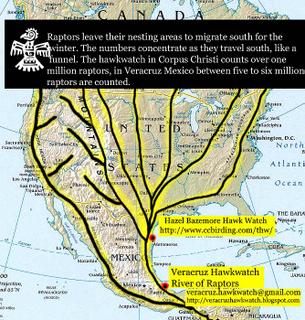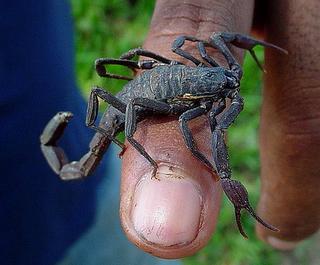(this interative satellite image site of Google is phenomenal!!)
I worked up a crude map to show you the direction of the migrating raptors as they flow over Tlacotalpan (where I am currently monitoring the raptor migration) I don´t suggest that all the raptors are flying over Tlacotalpan......but enough to make it worth watching.
The morning was slow raptor wise......I was able to "digiscope" a couple of birds here in Plaza Doña Marta. (Below is a fledgling Green heron, there are two of them, I am able to see their antics on an off during the day.
Tropical Kingbird that I was able to digiscope today. These guys are always hanging around during the day.
At 13:30 a slow moving group (25) of Turkey Vultures appear over the Plaza.
Finally! After two days of famine....a nice snack! (laughs)
Between 13:45 and 14:45 I got some Broad-winged hawk movement. (Yesterday here was zip for BW´s) Some nice lines/kettles overhead.
Today, the biggest line of Broad-winged hawks was 1,560.
In one hour´s time I am able to comfortably count 4,218 Broad-winged hawks.
Broad-winged hawks were quite high today. Photo below shows the classic
flight profile of Broad-winged hawks in glide
Today´s report
Tlacotalpan, Veracruz Mexico
Sept. 30, 2005
Count conducted from 10 am til 16:00
light winds from the NNE, hot and humid (rained most of last night) with high of 33C
Broad-winged hawks...........4,218
Turkey Vultures........................87
Osprey..........................................7
Peregrine falcon.........................11
Sharp-shinned hawk...................1
Cooper´s hawk.............................3
American kestrel..........................2
TOTAL..................................4,329
Resident raptors spotted...Black vulture, Lesser (yelow-headed) Savannah vulture, Northern caracara, Snail kite, Roadside hawk, Great Black hawk (sub-adult).
A solid day albeit a bit slow.........tomorrow should be better.
David McCauley
hawkwatch@gmail.com




